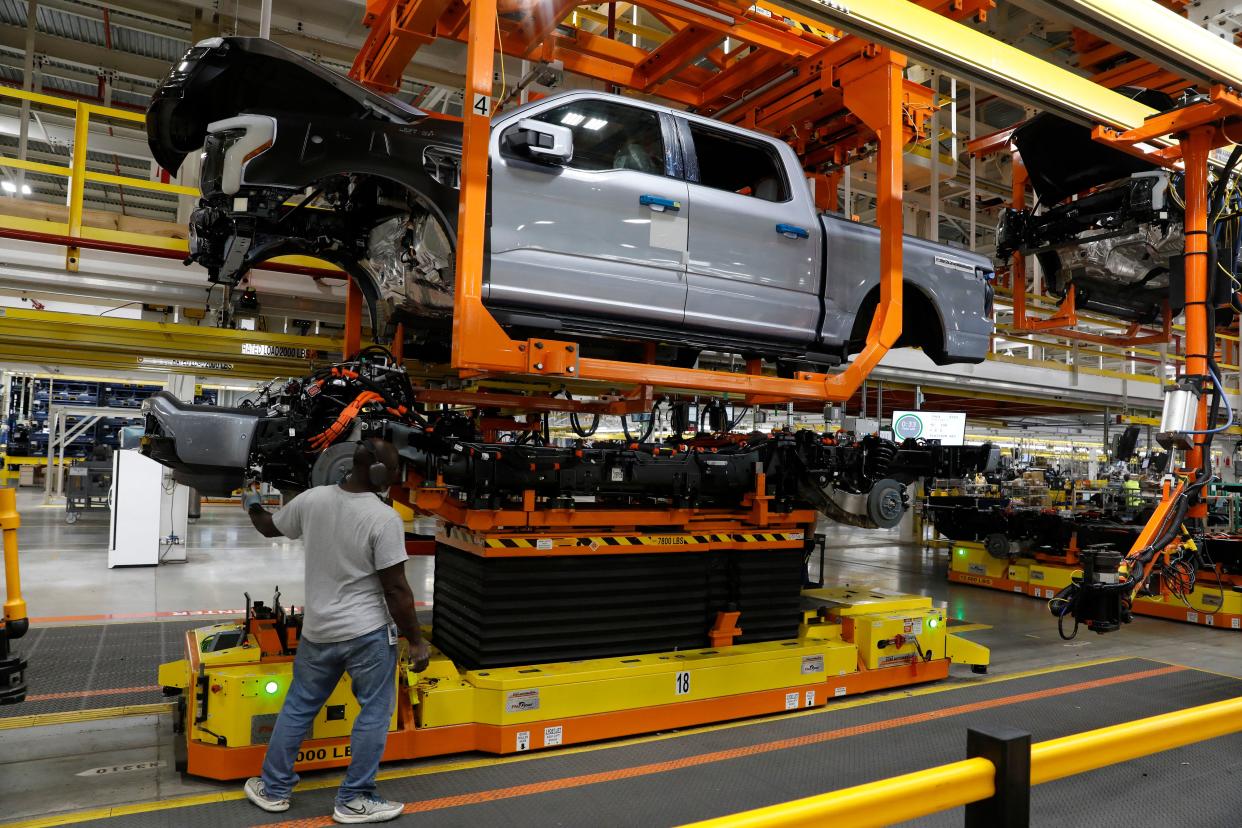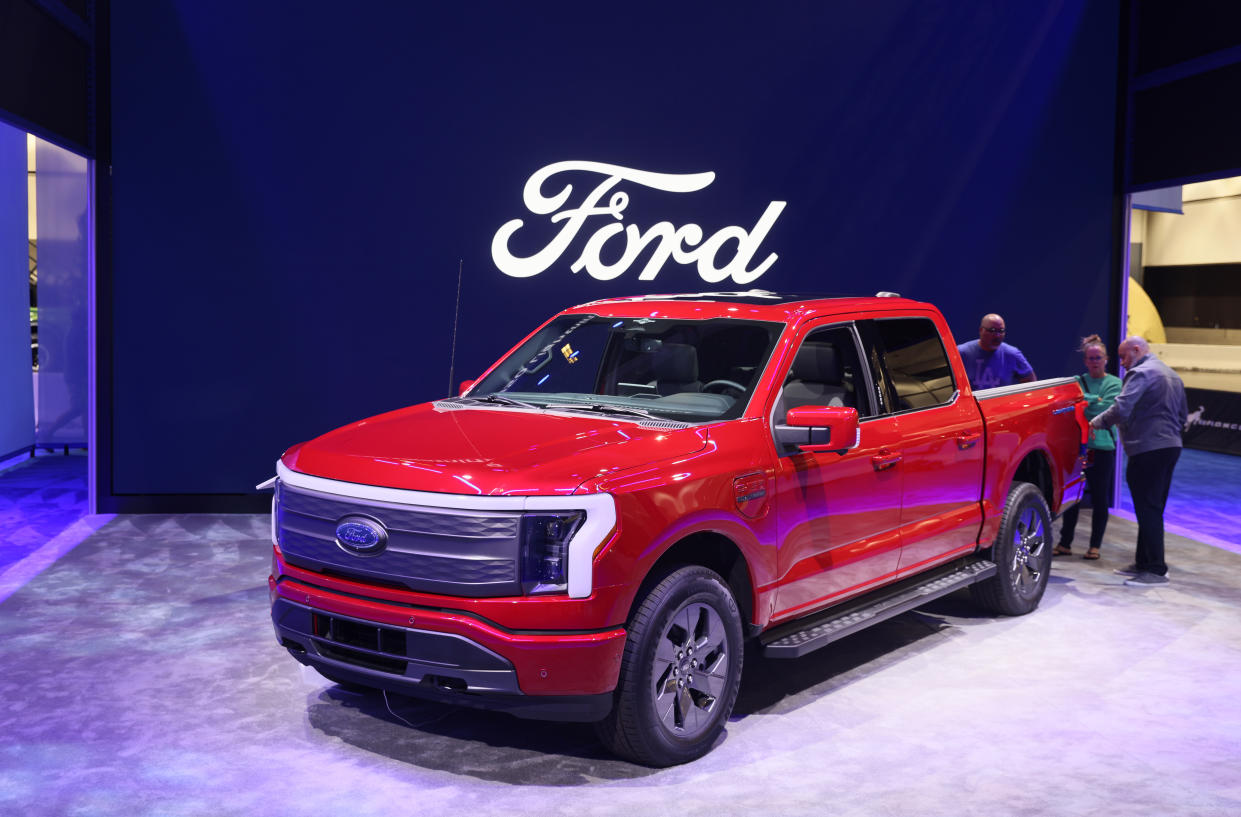Ford moves 1,400 workers off F-150 Lightning production as electric truck demand wanes
Ford (F) revealed on Friday morning that it will transition 1,400 workers off F-150 Lightning production at its Rouge electric vehicle production center as EV truck demand continues to wane. At the same time, the company will boost production of its gas-powered Bronco SUV and Ranger midsize pickups as customers flock to those options.
Ford said in a statement that those 1,400 workers will be impacted as the Rouge EV center transitions to one shift starting on April 1. Around 700 workers will transfer to the Michigan Assembly truck plant in Wayne, Mich., with others placed in roles at Rouge or other facilities in Southeast Michigan. Ford said some will take buyouts through a retirement incentive program that workers agreed to in the automaker's new 2023 UAW contract.
Ford Model e spokesperson Martin Gunsberg said to Yahoo Finance that demand wasn't the issue. “We continue to see growth, just at a slower pace. We’re adjusting to that growth."
Ford CEO Jim Farley echoed those comments earlier this week in an interview with Yahoo Finance, suggesting that price was key to the demand equation.
“So our EV [sales] are growing, but the prices have to come down, and what that really is telling us is that it's mainstream customers. They're not willing to pay the same premiums as early adopters,” Farley said.

Farley said the brand was No. 2 in the US in EV sales, and in the fourth quarter, EV and Lightning pickup sales were “a lot” compared to a year ago. Farley said Ford is at 150,000 units of EV capacity now and selling around 10,000 EVs a month in the US.
Apparently, those numbers aren’t enough to warrant two shifts of Lightning production at Ford’s Rouge EV plant. In December, the automaker told suppliers it was going to slash Lightning production in half to 1,600 units from 3,200 EVs a week starting in January.
When reached for comment, Ford did not say what Lightning production volume would be following Friday’s news or if December’s memo to suppliers was related to today’s news on cutting a production shift. Farley added in a statement that "customers love the F-Lightning," and that Ford sees a "a bright future for electric vehicles for specific consumers, especially with our upcoming digitally advanced EVs and access to Tesla's charging network beginning this quarter."

For Ford, the overall EV story goes beyond today’s news on the Lightning; from Farley’s perspective, the biggest game changer is who’s making the vast majority of EVs and how automakers should respond.
“The big picture is that China makes 50% to 60% of all the electric cars on the planet, and so we have a whole new competitive set we never had,” Farley said. “Now China, in the first quarter last year, became the No. 1 exporter of vehicles globally — bigger than South Korea, bigger than Japan.”
This goes back to cost and how to make EVs cheaper and better to compete with China. While EV makers like Rivian (RIVN) are doing seemingly well in terms of sales targeting an upmarket consumer, Ford’s Lightning and other EVs have to sell in “mainstream” numbers to make the financial figures work.
"We're seeing mainstream customers who are interested in EVs, but they're not convinced, and they're not going pay a big premium," Farley said. "So what it means for the OEM [original equipment manufacturer] is cost — we have to dramatically reduce the cost. Thankfully, we thought this was going happen, ... and so we're just a few years away from launching our gen. two products, which no one has seen, and those are really oriented around a different cost level."
Ford will likely reveal more about its current EV production plans, and what’s next for its second generation vehicles, when the company reports Q4 earnings on Tuesday, Feb. 6, after the closing bell.
Pras Subramanian is a reporter for Yahoo Finance. You can follow him on Twitter and on Instagram.
Click here for the latest stock market news and in-depth analysis, including events that move stocks
Read the latest financial and business news from Yahoo Finance
